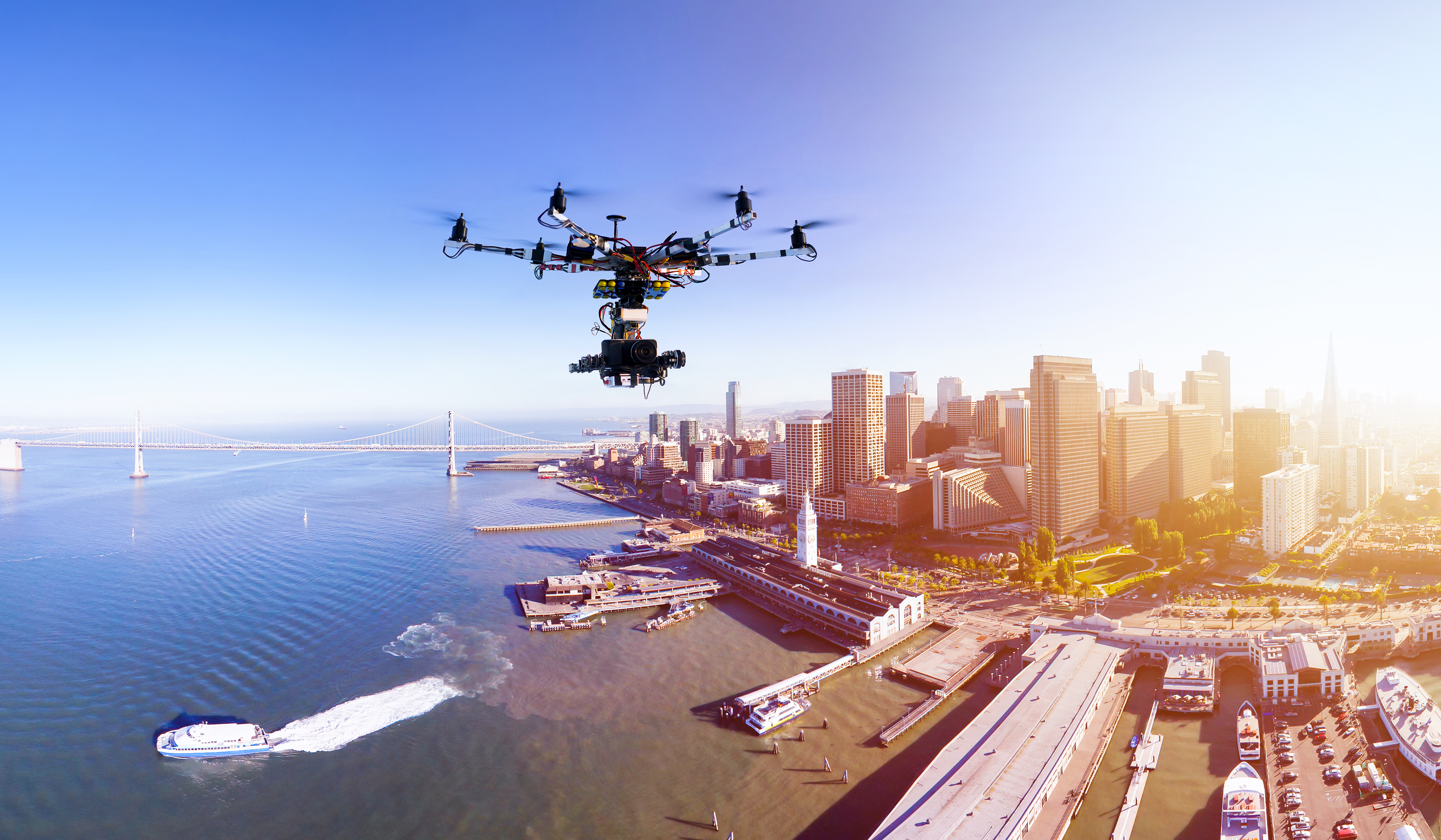Drones, Cellular Networks and Nanosatellites are Revolutionizing Live Broadcasts
Can drones replace helicopters for producing aerial views?

The broadcast industry is in the infancy stages of utilizing drones for sports, news, and production applications. Today, drones are increasingly being used for aerial shots of developing news stories and flyovers of sports stadiums, as their small size enables broadcasters to access tight spaces and fly at a low altitude at a fraction of the cost of using helicopters. Some drones are currently outfitted with 4K and 8K cameras, allowing them to deliver ultra-high-quality live video footage with embedded telemetry data.
As the drone technology and its use cases evolve, it begs an important question. Can drones replace helicopters for producing aerial views? This article will examine some of the challenges and recent technology innovations for leveraging drones in the broadcast and other application environments, such as public safety and security.
Impacts of Beyond Visible Line of Sight on Long-Range Operations
One of the greatest challenges broadcasters face is using drones beyond the visual line of sight (BVLOS) requirements mandated by the Federal Aviation Administration (FAA). The current license for commercially flying drones (i.e., FAA Part 107) mandates a maximum flying altitude of 500 feet and an all-flying time visual line of sight to the drone pilot.
In addition, the transmission of the drone controls and video must be within a certain distance to ensure superior video quality, reception, and preservation of command and control of the drone.
Extending Visible Line of Sight With Wireless Networks and Nano Satellites
Broadcasters can overcome visible line of sight limitations with state-of-the-art technologies. Every drone has a transceiver that receives commands and sends video plus telemetry. If Unmanned Aerial Vehicle (UAV) pilots cannot physically see the drone, they are not compliant with current FAA rules, which are designed to prevent a drone from falling on a crowd or loss of control, due to failure of long-range communication with the drone.
Cellular networks and nanosatellites offer a solution. By using a cellular network or nanosatellite, broadcasters can create bidirectional communications with the drone beyond the line of sight and could therefore fly an unlimited distance as long as power and connectivity with cellular networks or nanosatellites are available. Achieving low latency rates, ideally of 50ms, is also extremely important, to ensure that the commands are received in near real time.
All that is required to accomplish long-range flying and controlling of the drone is maintaining a good connection between the drone and a cellular tower or nanosatellite constellation. In addition, to accomplish BVLOS flying distances requires using a more sophisticated small aperture antenna or a bonded cellular device onboard. Adding an antenna or built-in bonded cellular device will add weight to the drone. It’s important to note that FAA Part 107 currently limits the total weight at takeoff to 55 pounds.
So why should broadcasters, public safety, and security forces use drones vs. a helicopter? The compact nature of drones enables them to fly over any type of event or terrain and provide live, almost real-time, coverage with highly accurate GPS and telemetry data that would be unavailable by other means. Moreover, there are technical, logistic, and economic advantages of using drones for video production and monitoring applications.
To accomplish similar capabilities, helicopters require a tracking directional, or omnidirectional, antenna pointing toward a tower. The tower needs a receiver and a transmitter to act as a relay station to deliver the live feed to a receiving command and control facility. This is very costly, both from a hardware perspective and in terms of helicopter running costs. The expense of using drones is significantly less than helicopters, enabling broadcasters, public safety teams and security forces to deliver similar or better video quality at lower altitudes than helicopters are capable of.
Conclusion
Wireless cellular networks and nanosatellites are transforming how the broadcast and public safety industries use drones for video monitoring and production beyond visual line of sight. In the future, the quality of video delivered by drones will keep improving, with 5G providing an outstanding amount of bandwidth and enabling clearer, more pristine pictures.
As transmission solutions, camera equipment, and cellular networks continue to evolve, the result will be enhanced video quality, improved coverage, lower latency, increased bandwidth, reduced costs, and many more exciting capabilities for live monitoring and broadcast production.
Get the TV Tech Newsletter
The professional video industry's #1 source for news, trends and product and tech information. Sign up below.
Claudio is the president, CEO and founder of ProximaVision Corporation – formerly known as Primestream Corporation. Claudio has more than 40 years of experience as an entrepreneur in the media and entertainment broadcast industry. In 2022 he received a Technology and Engineering Emmy® Award from the National Academy of Television Arts and Sciences for his contribution to the field of “Cloud Enabled Remote Editing and Project Management Technology.”

